Table of Contents
Guide
Page List

ABOUT THE AUTHORS
Yan Shen has been a lecturer in Asian Languages and Cultures at UCLA, Los Angeles since 2005. She has a Masters in Sinology and Anthropology from the University of Trier in Germany and a Bachelors in Chinese Language and Literature from Capital Normal University, Beijing, China. She was born in China and has lived in Beijing for more than two decades. She taught Chinese as a second language at the International Chinese Language and Culture Center at Tsinghua University between 1993 and 2004 and has been a certified Oral Proficiency Tester for the American Council on the Teaching of Foreign Languages since 2012. She has published articles in journals, such as
The Journal of Tsinghua University, and presented at national and global conferences, including ACTFL and CLTA.
Joanne Shang teaches Mandarin Chinese at Rye Country Day School in New York and is professionally focused in student-centered pedagogy and technology integration in world language teaching and learning.
Joanne Shang teaches Mandarin Chinese at Rye Country Day School in New York and is professionally focused in student-centered pedagogy and technology integration in world language teaching and learning.
She is a master teacher in Startalk programs and presents regularly at national and global conferences. Joanne previously taught in North Carolina and Hong Kong. Both authors have been readers for the AP Chinese Language and Culture exam. ACKNOWLEDGMENTS Thanks to my husband, Wei Li, for his support while I worked on the book. Thanks also to my daughter, Yunyi Li, for her help in translating much of the Chinese into English. Many thanks also to Joanne Shang for checking the manuscript and offering valuable suggestions for improvement.
Special thanks are due to my editor at Barrons, Samantha Karasik.Yan Shen AUDIO To access the audio for all listening segments, go to: online.barronsbooks.com Copyright 2019, 2014, 2009 by Kaplan North America, LLC, d/b/a Barrons Educational Series All rights reserved. No part of this publication may be reproduced or distributed in any form or by any means without the written permission of the copyright owner. Published by Kaplan North America, LLC, d/b/a Barrons Educational Series 1515 West Cypress Creek Road Fort Lauderdale, FL 33309 www.barronseduc.com ISBN: 978-1-4380-1184-4 ISSN: 2330-3263 Kaplan North America, LLC, d/b/a Barrons Educational Series print books are available at special quantity discounts to use for sales promotions, employee premiums, or educational purposes. For more information or to purchase books, please call the Simon & Schuster special sales department at 866-506-1949.
Contents

As you work toward achieving that on your AP Chinese Language and Culture exam, here are five essentials that you MUST know above everything else:
Familiarize yourself with the exam structure and the three modes of communication around which the course is structured. Understanding the various tasks on the exam is critical for success. Remember that communication can be interpersonal, interpretive, or presentational.
All of the tasks on the exam are built upon these modes. Your success depends on a balanced mastery of language. Listen and read critically. You will need to comprehend a variety of authentic Chinese texts, e-mails, letters, articles, conversations, interviews, announcements, and other items such as ads, charts, and instructions. Be sure you understand the purpose, the essential facts, and the tone of each of these items, as well as the puns and euphemisms used. Complete the tasks in the Free-Response Questions. The instructions to the Free-Response Questions are written in English. Read them carefully as they specify what tasks are expected of you.
It is most important to complete the right task correctly. Overlooking a task or subtask will marginalize your score regardless of the rich language used. Type correctly. The Writing sections include an E-mail Response and a Story Narration. Each must be completed in 15 minutes by typing Chinese characters. Practice typing on IME methods for proficiency and accuracy in choosing the characters after keying in the Hanyu Pinyin or Zhuyin Fuhao. Use all elements of this guide. Read and pay attention to the suggested strategies and the explanations in the Answer Keys to strengthen or supplement your knowledge.
Complete the exercises in all sections and the two Practice Exams. Be sure youre familiar with the exam directions. 
The AP Chinese Language and Culture program offers high school students an opportunity to earn credit for Chinese courses at the college level. Like other College Board programs, it is available to anyone worldwide who wishes to participate. The AP Chinese Language and Culture exam was first held in May 2007 and is used to assess a students proficiency in Chinese, equivalent to completing a fourth-semester Chinese course in college. The AP Chinese Language and Culture exam consists of two essential aspects: Chinese language and Chinese culture.
Since language and culture are so closely intertwined, culture is acquired in the process of learning a language, and language is learned when studying culture. As such, students should try to absorb as much Chinese culture as possible while learning the language, because it is impossible to separate the two.
The curriculum and assessment frameworks for the AP Chinese Language and Culture course undergo continuous improvement. In order to prepare for the AP Chinese Language and Culture exam, students are strongly encouraged, although not required, to enroll in an AP Chinese Language and Culture course in high school. Like other AP courses, the AP Chinese Language and Culture course should match the level of a fourth-semester university/college course in Mandarin/
Putonghua Chinese. This level requires students to complete approximately 250 hours of classroom instruction.
In the AP Chinese Language and Culture course, students should intensively practice Chinese in three modes: interpersonal, interpretive, and presentational. In addition, they should develop Chinese language skills in the five goal areas: communication, cultures, connections, comparisons, and communities. The first goal involves communication in Chinese. Students are expected: to engage in conversations, provide and obtain information, express feelings and emotions, exchange opinions, and make presentations to understand, write, and discuss a variety of topics The second goal involves the acquisition of cultural knowledge. This includes: understanding social patterns the active practice of conventions appropriate use of Chinese in cultural settings In particular, students should understand significant components of Chinese culture, such as traditions, history, literature, art, and so on. The third goal is to establish a connection between Chinese and other disciplines and to further acquire information and recognize distinctive viewpoints that are only available through Chinese language and culture.

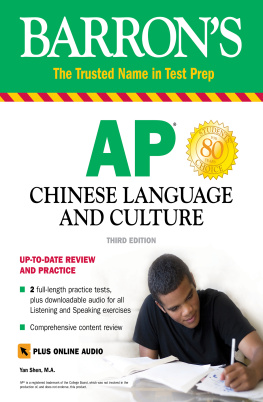




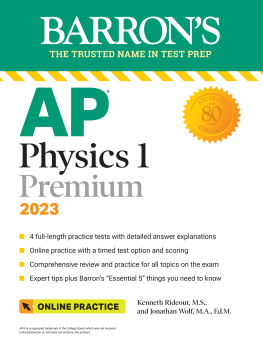


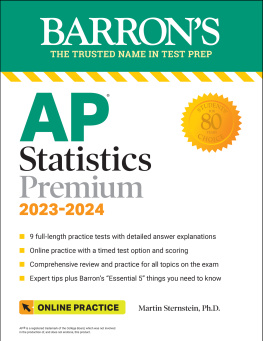
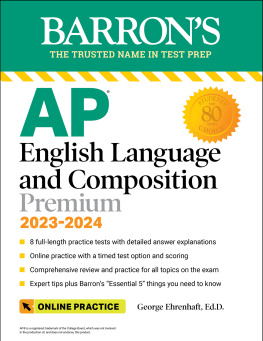
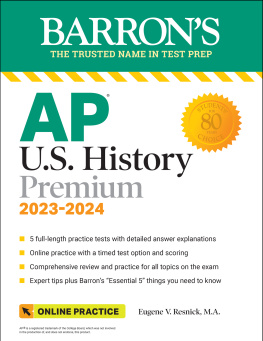



 ABOUT THE AUTHORS Yan Shen has been a lecturer in Asian Languages and Cultures at UCLA, Los Angeles since 2005. She has a Masters in Sinology and Anthropology from the University of Trier in Germany and a Bachelors in Chinese Language and Literature from Capital Normal University, Beijing, China. She was born in China and has lived in Beijing for more than two decades. She taught Chinese as a second language at the International Chinese Language and Culture Center at Tsinghua University between 1993 and 2004 and has been a certified Oral Proficiency Tester for the American Council on the Teaching of Foreign Languages since 2012. She has published articles in journals, such as The Journal of Tsinghua University, and presented at national and global conferences, including ACTFL and CLTA. Joanne Shang teaches Mandarin Chinese at Rye Country Day School in New York and is professionally focused in student-centered pedagogy and technology integration in world language teaching and learning. Joanne Shang teaches Mandarin Chinese at Rye Country Day School in New York and is professionally focused in student-centered pedagogy and technology integration in world language teaching and learning.
ABOUT THE AUTHORS Yan Shen has been a lecturer in Asian Languages and Cultures at UCLA, Los Angeles since 2005. She has a Masters in Sinology and Anthropology from the University of Trier in Germany and a Bachelors in Chinese Language and Literature from Capital Normal University, Beijing, China. She was born in China and has lived in Beijing for more than two decades. She taught Chinese as a second language at the International Chinese Language and Culture Center at Tsinghua University between 1993 and 2004 and has been a certified Oral Proficiency Tester for the American Council on the Teaching of Foreign Languages since 2012. She has published articles in journals, such as The Journal of Tsinghua University, and presented at national and global conferences, including ACTFL and CLTA. Joanne Shang teaches Mandarin Chinese at Rye Country Day School in New York and is professionally focused in student-centered pedagogy and technology integration in world language teaching and learning. Joanne Shang teaches Mandarin Chinese at Rye Country Day School in New York and is professionally focused in student-centered pedagogy and technology integration in world language teaching and learning.  As you work toward achieving that on your AP Chinese Language and Culture exam, here are five essentials that you MUST know above everything else: Familiarize yourself with the exam structure and the three modes of communication around which the course is structured. Understanding the various tasks on the exam is critical for success. Remember that communication can be interpersonal, interpretive, or presentational.
As you work toward achieving that on your AP Chinese Language and Culture exam, here are five essentials that you MUST know above everything else: Familiarize yourself with the exam structure and the three modes of communication around which the course is structured. Understanding the various tasks on the exam is critical for success. Remember that communication can be interpersonal, interpretive, or presentational.